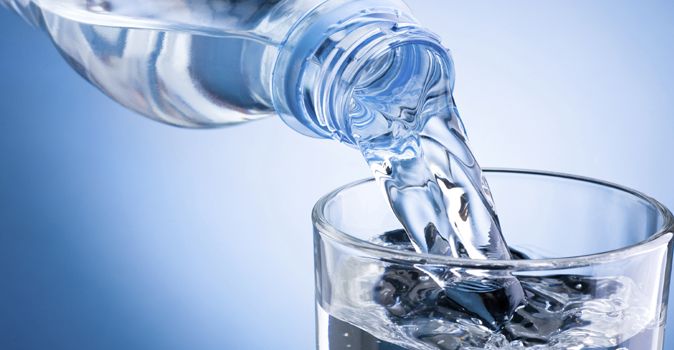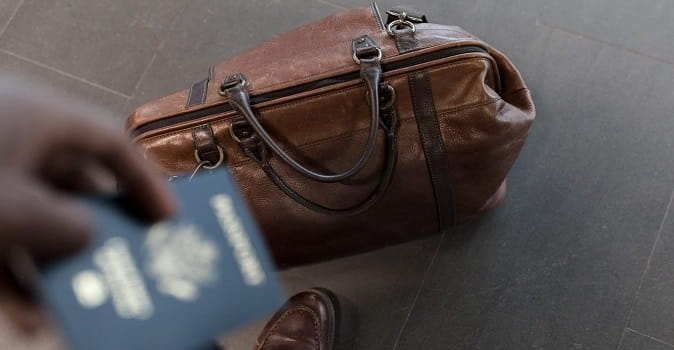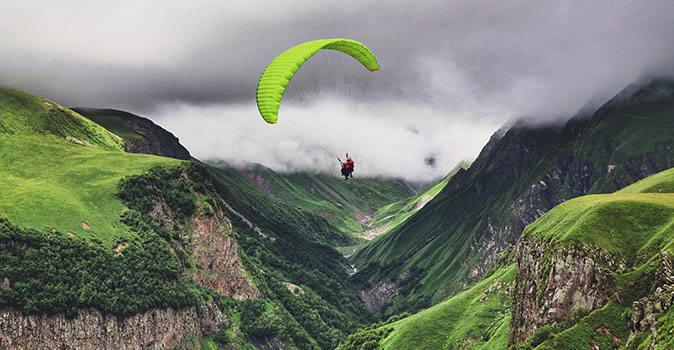Drinking water in other countries is one of the leading causes of health issues for travelers. It may lead to days in bed and missed adventures—or can even result in time spent in the hospital.
The most common culprits causing water-borne illnesses include bacteria (like e. coli, salmonella, and cholera), protozoa, viruses (like hepatitis, rotavirus, and polio), and chemical pollutants.
While the locals might have immunity from these pathogens, foreigners run a higher risk. So, how can you avoid getting sick when drinking water in other countries?
Know Your Risk
Can tap water make you sick? Which countries have safe tap water? Which don’t?
Important Note
The countries’ tap water listed as “safe” or “unsafe” below are based on standards from the Centers for Disease Control and Prevention (CDC). A country with tap water listed as “unsafe” doesn’t necessarily have water that’s unclean or polluted, but it does have impurities that pose a high risk to travelers who haven’t built up a tolerance. It’s best to avoid the tap water in these countries for this reason.
Countries with Safe and Unsafe Tap Water
If you’re traveling anywhere in Africa, South America, or Central America, it’s safe to assume you shouldn’t drink the tap water. In North America, Canada, Greenland, and the United States are the only countries that have generally safe tap water.
Mexico is one popular tourist destination to cause concern. Drinking water in Mexico is a common cause of traveler’s diarrhea. Stick to sealed bottled water instead.
In Europe, it’s necessary to check the tap water status of your destination (see “Using the CDC Travelers’ Health Tool” below), as most Eastern European countries do not have safe tap water.
On the other hand, most Western European countries are safe for drinking water. European countries with generally safe drinking water include:
- Andorra
- Austria
- Belgium
- Czech Republic
- Denmark
- Finland
- France
- Germany
- Greece
- Iceland
- Ireland
- Italy
- Liechtenstein
- Luxembourg
- Malta
- Monaco
- Netherlands
- Norway
- Poland
- Portugal
- San Marino
- Slovenia
- Spain
- Sweden
- Switzerland
- United Kingdom
- Vatican City
In Asia, the following countries generally have safe water:
- Brunei
- Hong Kong
- Israel
- Japan
- Singapore
- South Korea
In other countries in Asia, you’re probably best to go with bottled water.
Lastly, in the continent of Oceania, it’s safe to drink tap water only in Australia and New Zealand. Again, use caution in other countries in this region.
What About Ice from Tap Water?
The Centers for Disease Control and Prevention (CDC) advises against consuming any drink with ice made from tap water in any country where drinking tap water is ill-advised.
When it comes down to it, limit your risk. Research before you leave. Find out where the tap water comes from in your destination country. You can do this through simple online research, including using the CDC Travelers’ Health Tool. If it seems risky, play it safe and only drink bottled water.
Using the CDC Travelers’ Health Tool
On the CDC website, the Travelers’ Health Tool provides an easy way to measure your risk when traveling. Scroll down on the main page to see all the latest travel health notices.
You can also select your destination country under the “For Travelers” heading to find more detailed and specific travel health information. The top of your destination country page will immediately signify any current outbreaks. The CDC also assigns a travel health notice to your selected country to inform you about current issues that could impact your health.
Notices are as follows:
- Watch Level 1 – Practice usual precautions
- Alert Level 2 – Practice enhanced precautions
- Warning Level 3 – Avoid all non-essential travel
You’ll also find a full list of vaccinations and medications you need, eating and drinking safety tips, bug bite prevention tips, and more. Be sure to explore this tool before you leave your home country.
Food and Drinks to Avoid
When you stick to food and drinks that are generally safe, you further lower your risk of becoming ill from food or water-borne illness. Below is a list of food and drinks that the CDC considers “safe” or “unsafe” when traveling.
Safe vs Unsafe Food
Usually, hot food, prepackaged food, and dry food are safe to consume. Heat kills germs. As long as it isn’t left out to sit for too long and it’s cooked thoroughly, it’s probably safe. However, watch out for buffets. Food left out without heat could become contaminated.
Most germs also need moisture to grow, which makes dry food a safe bet. Dry food items such as potato chips, bread, and crackers are unlikely to cause any serious harm.
In contrast, street food, raw food, or wild game meat is taking a risk. Many foods are prepared with tap water and may carry bacteria from drinking water. Street food vendors are also generally held to a different hygiene standard than regular restaurants. This means you should always use caution.
“If you watch something come straight off the grill (cooked and steaming hot), it’s more likely to be safe,” shares the CDC.
Safe vs Unsafe Drinks
Factory-sealed bottles and canned drinks are relatively safe to consume. When drinking from a can, clean off the top before bringing it to your mouth.
Carbonated drinks such as soda and sparkling water are the safest bottled drink option, since you can quickly tell if a bottle is factory-sealed by the gas escaping when you first open it. But be careful with some street vendors who may refill bottles with tap water and reseal it with glue. GrrrlTraveler.com recommends listening for the subtle “click” or “pop” plastic caps often make when they’re unscrewed for the first time.
Hot drinks, alcoholic drinks, and sealed pasteurized milk are further considered safe. Be careful with hot drinks when adding lemon or any other fruit, however. These fruits may have come into contact with contaminated water.
Avoid drinking milk that has been sitting at room temperature. When it comes to alcohol, steer clear of “on the rocks” drinks. Further limit your risk by avoiding tap water, fountain drinks, ice, and fresh juice in developing countries and regions where you’re unsure of its safety.
How to Test the Quality of Water When Traveling
Signs that your water may be unsafe include a change in odor, color, or taste. However, many microbes are odorless and colorless and are undetectable without proper water testing tools. Many of these tools include strips you compare to a colored chart. If you really want to play it safe, purchase a kit before you leave for your destination.
You can also turn to reliable water purification methods and devices when traveling, such as the ones described below.
Method #1: Boil Water While Traveling
Is boiled water safe to drink? Most of the time, yes. How do you do it? First, remove any big particles from the water via a filter or similar device. Bring the water to a boil for one minute or more. If you’re above 6,500 feet in elevation, boil the water for three minutes or more. Let the water cool before you drink or use it.
Method #2: Use Iodine Tablets or Solution
First remove the bigger particles. Afterward, read and follow the instructions on the tablets or solution you purchased. Usually, iodine purification requires shaking or mixing of the water and a 30-minute wait.
Iodine tablets or solution are easy to find. Your local sporting goods or outdoor store likely has some in stock. Or you can even order them on Amazon.
Method #3: Add Chlorine Drops
Chlorine drops for water purification work similar to iodine solution or tablets. They also effectively kill all germs and bacteria. Be careful to only add the recommended amount. Too much chlorine can lead to symptoms like those which result from water-borne or food-borne illnesses.
You can find chlorine drops at Amazon or your local sporting goods store.
Method #4: Purchase a Travel Water Purification Device
There are various innovative and compact water purification devices on the market. You can even buy water bottles with a built-in filter and purification system. There are also pump filters, which require a bit of manual effort, or gravity filters for those planning on hiking while traveling with a bigger group.
Lastly, UV purifiers, like the Steripen, are compact and very effective.
You can purchase many of these devices at your local outdoor or camping store. Buying them online is also a convenient option. Yet, these items may cost a bit more than the other methods. Some, like the pumps, may also require slightly more work.
Ultimately, the choice is yours. And when you have the option, bottled water is always best.
Symptoms of Drinking Contaminated Water
The main symptom of drinking contaminated water involves gastrointestinal issues, including diarrhea, nausea, and stomach pain. The exact symptoms may depend on the specific contaminate or germ. Either way, getting sick from contaminated water can ruin a trip or vacation.
If you’re traveling abroad and may encounter unsafe drinking water, always use best safety practices to help you and your family stay healthy.
Also make sure you have coverage for unexpected medical expenses, such as those that might result from water or food-borne illnesses. Your health insurance from home may not cover you when traveling abroad, and getting sick in a foreign country can leave you vulnerable to medical expenses. Atlas Travel insurance is one plan designed for international travel. It covers many unexpected illnesses and injuries you might incur outside of your home country, as well as travel scenarios like trip interruption or travel delay.
Learn more about what travel medical insurance is or explore the benefits of Atlas Travel. Leave on your next adventure knowing you have coverage for the unexpected that might occur abroad.



